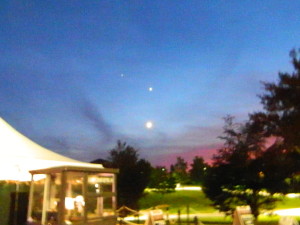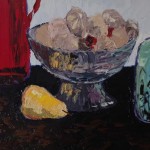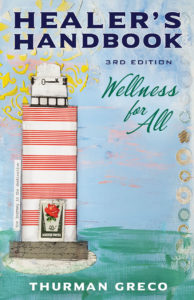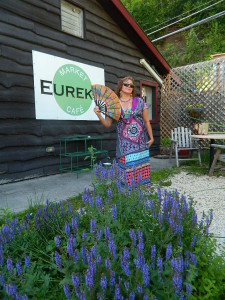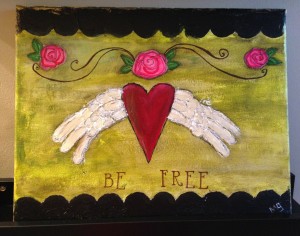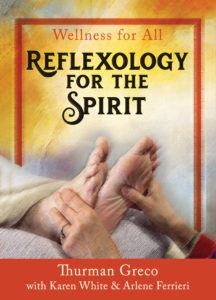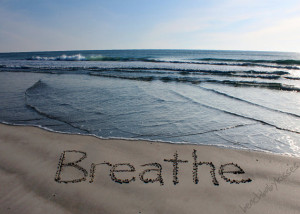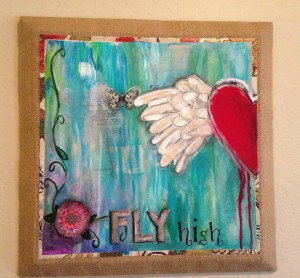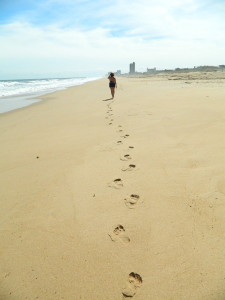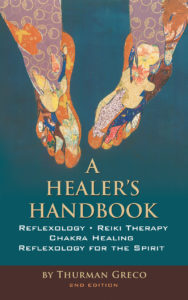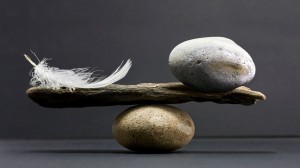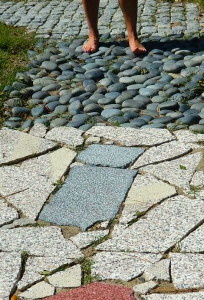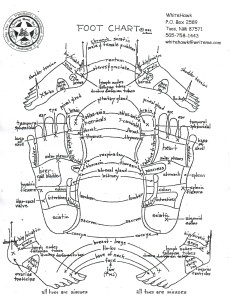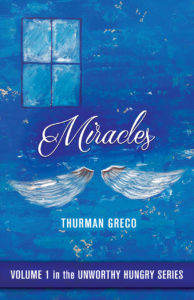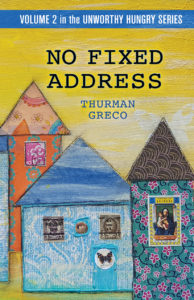Stress Busting Starts Here!
Let’s face this right now. Diets are stressful.
So is everything else when you’re dieting.
Even before you settle on the diet you’re going to adopt, find your stress busters. .
The bottom line is this: choose activities to do when you feel stressed. You don’t want to eat to combat stress.
Choose your healthy coping mechanism from dancing, gardening, journaling, meditating, puzzles, reading, singing, volunteering.
If you are a member of the right gym, you’ll be able to take advantage of stress busting activities offered. These may include yoga, zumba, spinning, and dozens of other activities.
Cultivate simple things you can do at home and at work to lift your spirits. These can include midday walks and playing relaxing music.
The idea is to have activities which don’t include munching on nuts and candies.
Walking 10,000 steps daily is a good stress reducing goal.
A weekly bodywork session can only be good for you and your diet success. Of course, I recommend reflexology, reiki therapy, or mindfulness meditation.
Your options are in the hundreds. Choose the most relaxing options for you and your lifestyle.
Two effective stress-reducing habits which can help you include keeping an appointment calendar and an ongoing to-do list.
Life is filled with small stressors which can be avoided with a calendar and a list.
For example, with a to-do list at the grocery store, you won’t leave out a key ingredient for a meal. This seems like a small enough thing but if you’re stressed already, that missing item can be the one that complicates your life.
A calendar will make sure you don’t miss an appointment. Your life can be streamlined and easier if you use it to help you shop, keep up with friends and relatives, make appointments.
In reality, you’ll lose less time because you forgot something or someone.
When you include a gym membership in the mix with the calendar and the to-do list, you’ll be much more organized. You’ll be more physically fit. Your new diet will be an easier experience.
Thanks for reading this blog post. Please refer it to your preferred social media network.
Looking forward to hearing from you.
Thurman Greco
thurmangreco@gmail.com
Is it a Cold, the Flu, or Coronavirus?
For months we’ve all been reading and hearing about a resurgence of the coronavirus combined with the flu. So…what does this mean?
Every year I hear the same question at the beginning of flu season: HOW DO YOU KNOW WHETHER IT’S A COLD OR THE FLU? This season, the question is a little different: HOW DO YOU KNOW WHETHER IT’S A COLD OR THE FLU OR CORONAVIRUS?
There are some real differences.
Fever is rare with a cold. Fever is common with the flu. It’s usually high and lasts three or four days.
Headaches are rare with a cold but common with the flu.
Cold sufferers may have slight aches and pains. Flu sufferers have definite aches and pains which may be severe.
Extreme fatigue and/or weakness is just not a factor with a cold. Exhaustion is common with the flu – especially at the onset of the illness.
Sore throat, stuffy nose, and sneezing are common with a cold. A person suffering with a cold may have mild symptoms to include a hacking cough. With the flu, these symptoms can become severe.
With colds, treatment includes antihistamines, decongestants. With the flu, the patient needs to consult with a physician about any needed medication.
Coronavirus complicates things.
Many people experience fever as the first symptom of Coronavirus.
The second symptom is often a combination of a cough and muscle pain.
Nausea and vomiting make up the third tier.
These symptoms are usually followed by diarrhea.
And, that’s not all. Some people experience a loss of taste or smell.
And, some people experience deeply reddish-blue toes (chillblains).
Others have headache and dizziness.
The bottom line here is that coronavirus has many symptoms while colds and flu
are much less complicated.
If you suspect coronavirus, go get tested. Waiting around while you try to decide you are sick and contagious or not is not good for you and it’s not good for those around you.
There are several tools at your disposal which can help you early on.
A thermometer is essential. Take your temperature daily.
When I’m out in the community, my temperature is the key to getting into the office where I have an appointment.
The no-touch forehead fever thermometer gun has become ubiquitous on receptionists’ desks wherever I go.
There’s no reason why you shouldn’t take your temperature every morning. Your temperature can accompany your blood pressure reading. You can keep your thermometer gun beside your blood pressure cuff.
Then, you only need one other item: a pulse oximeter. A pulse oximeter estimates the amount of oxygen in your blood.
If you have coronavirus, your pulse oximeter will register a lower oxygen level in your body. This is because with coronavirus, your lungs are inflamed. (Actually, with coronavirus, inflammation is all over your body).
So, if you are concerned about your health because you may become exposed to coronavirus, you can help yourself with your temperature, your blood pressure, and your oxygen level.
If you feel ill, you will help your healthcare professional with these three scores.
For those who aren’t really familiar with an oximeter, it is the little plastic clip placed on your finger when you get your blood pressure measured.
These devices are not that expensive, are easy to use, and you can find an explanatory chart which will explain the meaning of the score.
Whatever you decide, prevention is important. Wash your hands often, wear a mask always when you leave your home, use hand sanitizer and don’t go anywhere around other people if you can help it.
Thanks for reading this blog post. If you liked this article, please forward it to your favorite social media networks.
Thanks again,
Thurman Greco
September Solstice – a Time to Focus on Wellness and Healing for Ourselves and Our Planet
The September Solstice is a time to promote wellness and healing throughout the planet. Please take a moment to dwell on a planet where all beings experience wellness and coexist in honor and support.
Visualize a world where all beings experience positive renewal and growth as wellness and healing become real. Get to know all the wonderful opportunities in your world for growth and hope throughout our planet.
As the planet goes into its next phase, support your spirit and encourage healing and wellness to all plants and animals on earth. Make a place for yourself during this time to encourage spiritual growth.
Think of ways you can invite universal balance in your life. Think of how you fit into your day, into your world, into your goals.
Check in with yourself to give support to your spirit. Focus on a world where everyone works together with respect and harmony in support of all needs.
Create a vision of peace and wellness for yourself. Attract spiritual calm.
Expand your peace and wellness and spiritual calm to include every living thing in the world.
Thank you for reading this meditation.
Please refer this article to your preferred social media network. If you like this post, please forward it to your friends.
Thanks again,
Thurman
It’s Here! A Wellness for All Reflexology Video
It’s time!
THE VIDEO IS AVAILABLE NOW!
What began as reflexology class notes years ago has now become an informative and entertaining video just waiting for you!
One evening several months ago Karen White, Arlene Ferrieri and I drove out to Palenville to my publisher’s studio and very casually produced this video. Our intention is to offer a dialogue about reflexology which is easy to follow and use.
I hope you like it!
And, the price is sooo right. Simply go to
www.thurmangreco.com and click on videos.
There it is! It’s waiting for you and your donation. Every penny is destined to feed the hungry. No one received any payment for providing this video.
It is our hope that you will enjoy this video and find it informative as well as entertaining.
Please refer this blog post to your preferred social media network.
It is my dream that people will be as happy with this video as they are with the book, which is going into its third edition.
If you like this video, I hope you’ll send thoughts of gratitude to Karen and Arlene and everyone at Turning Mill who gave of their time with love.
Thurman Greco
Use the reflexology you keep in your toolbox – Part 6
One nice thing I like about reflexology: it’s adaptable.
You don’t have to do a lot to prepare for a reflexology session. Don’t get me wrong. Your session preparation can be as elaborate as you can imagine and desire. It can include music, incense, essential oils, enfolding comforters, gentle lighting, and anything else you want to add to support your client partner.
But when the going gets tough, all you have to do is gently touch a person’s hands or feet for a few moments. Reflexology warm-ups and warm-downs are powerful. And there are few to no contraindications to touch a person.
And, a person doesn’t have to be lying by the side of the road to qualify for a gentle touch and nothing more.
Reflexology works well with other modalities. I love to add Reiki therapy and chakra healing but there are many more modalities that work fine. The choice is up to you.
On a gurney or roadside, I would certainly add Reiki but, honestly, it’s not necessary. Reflexology will do the job quite well.
Popular reflexology holds which are appropriate for gurney or roadside situations include simply holding the person’s hands or feet.
If I can’t make contact any other way, a hand placed on a shoulder can be effective.
I like to begin a session with a gentle solar plexus hold. After that, I might hold the person’s heels to offer comfort and support. Gently holding a person’s lymphatic reflexes for a minute can bring calm.
And, truthfully, Reflexology’s job is to bring about homeostasis. This happens in a session, no matter the circumstances.
At your table, reflexology will generate a different result during each session. That’s because your client is different every day on a cellular level. This daily difference produces a unique outcome at every session.
But, no matter the circumstance, reflexology is a heavy lifter in your toolbox. It will not let you down. After a session, don’t waste even a minute thinking you should have done something else or touched the person’s feet or hands another way. Your hands did the right thing at the right moment for this person.
Thanks for reading this article. Please refer it to your preferred social media network.
THANKS!
Thurman
Healing Music – an important part of your toolbox – Part 5
Music is an important component of healing because everything has its very own musical component.
When we speak to one another (or to ourselves), our voices transmit a unique spiritual music. Each person’s voice is individual.
When we move, our bodies send a tempo representing our feelings at the moment.
Everything around us is musical because we are all composed of energy.
When we offer reflexology or Reiki therapy or chakra healing or any number of other healing modalities, each one has it’s own music. But, that doesn’t mean that an added layer of healing music isn’t important. The healing music you play while you heal a person contributes to that person’s wellness.
I have known healers who used only one or two musical selections for everyone. Other healers had stacks and stacks of cd’s to choose from.
I have also known client partners who preferred a specific song. One client partner wanted only a special song playing when she entered the healing room. She wanted nothing more. For her, healing began when she heard the music she chose. Her choice: “Nada Himalaya” by Deuter. New Earth Records produced this CD.
My thoughts on this: Whatever works for your client is the right choice.
The important thing is not whether I like the music or not. My preferences don’t matter. The important thing is that the person who needs and receives the healing responds positively to what she hears.
I have client partners who only want to hear chants. Others dislike the chants and don’t want to hear them. My job is to discover what music each client prefers and have it playing during each session.
If you don’t know what to offer, you can’t go wrong with some quiet Bach or Pachelbel. Music by Steven Halpern or Deuter have been staples in healing rooms for decades.
But, whatever you select, your choice is important, very important.
Not long ago, I lost a client because of the music I selected. This woman was a recent regular client – coming to my table weekly. She appeared to be happy with my services and healing modality environment.
She enjoyed a variety of music and I had enough CD’s to offer a different selection at each session. Then, one day, she walked into the healing room and immediately went on alert. She was even a little fearful. I didn’t know why.
Before the end of the session, she commented to me that I was playing her “favorite song”. The musician was not well known and only had one CD out. She revealed me that this love for the music we were listening to was a deep dark secret that she had never shared with anyone.
I had, inadvertently, invaded a private space she was not prepared to share.
Do I need to tell you what happened to this client?
Every client has a private space where no one can be invited in. One of the jobs of a healer is to find the door, make sure it’s locked, and throw away the key.
The music you share in your healing space is as intimate as the work you do.
Thanks for reading this blog article! Please share it with your preferred social media network.
Thurman Greco
